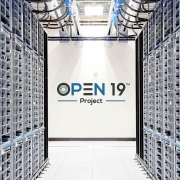Why ASHRAE is concerned about edge data centers
There are few organizations that have had as big an impact on data center design as ASHRAE — and specifically, their Technical Committee (TC) 9.9. ASHRAE’s 2004 publication Thermal guidelines for Data Processing Environments (now in its fourth edition) described the optimal environmental operating conditions for the electronics in a data center, and in doing so, effectively established some of the key design goals that have been followed by almost every data center builder and operator for the past 15 years.
In October 2020, ASHRAE published what it describes as a “groundbreaking” Technical Bulletin — this time looking specifically at edge data centers. The Bulletin is a lighter, shorter document than most previous TC9.9 publications, and it does not signal any changes in the thermal operating guidelines that remain so important. Nor does it reveal any significant new findings — even though TC9.9 members do have access to a lot of data and tests conducted by equipment manufacturers.
But its brevity does not imply that it lacks importance. The ASHRAE committee members want to send a warning that unless careful processes and guidelines are followed, and good technical choices made, there will be a significantly increased risk of electronic equipment failure in many edge data centers. Given that a lot more processing will be done at the edge in the next decade or so that means there could be more failures and service disruptions in the future than in the past.
In the document, and in separate conversations with Uptime Institute (which has members on the TC9.9 committee), ASHRAE TC9.9 members identify two major issues as they relate to edge data centers.
First, the simple fact is that almost all “core” enterprise, large, and colocation data centers have a strictly climate-controlled white space. Small edge data centers, however, cannot always maintain this — especially during maintenance. Edge data center doors may be open during maintenance, exposing equipment to rapid temperature change, rain and pollution. Cooling may be turned off during maintenance, leading to rapid heat rise; routine or urgent maintenance may not be possible or timely; and edge environments are more likely to have a higher density and to be hotter, colder, wetter, dustier or more insecure than big, remote, well-managed facilities.
A second issue is that a lot of the equipment on the market has been designed for use in large data centers where failure is more easily tolerated — or even deliberately allowed, as part of an overall “abandon in place” strategy. Put bluntly, the quality of IT equipment is no longer required to be as high as it used to be, because it has been designed to be quickly swapped out. Some leading suppliers no longer do the systematic, lifecycle-based testing that was once a necessity.
What can be done?
The first place to start is to avoid poor site selection — but that, of course, is not always an option for small edge data centers, which need to be near the point of use. Ideally, the actual data center (which may be prefabricated) should be designed to allow ease of maintenance without exposure to outside conditions, to minimize damage (such as to batteries and IT equipment). A data center infrastructure management system that remotely monitors key environmental variables and IT performance will help prevent failures. It also makes sense to design with some concurrent maintainability/fault tolerance, if the design goals/budgets allow.
Other key points of advice are:
- Protect the edge facility by servicing only during moderate weather or when using a mantrap or tent, to avoid potentially deleterious conditions. Even time of day can be a factor (e.g., humidity is often higher in the morning).
- Monitor humidity, condensation and temperature during servicing.
- Monitor the rate of temperature or humidity change when doors are opened.
- Beware of local particulates/pollution, such as ocean spray, dust, industrial pollutants and heavy vehicle exhaust.
- Air filtration should meet necessary standards — MERV (Minimum Efficiency Reporting Value) 11 or 13.
- Beware the effect of gaseous pollutants that cause corrosion (e.g., of components containing copper or silver).
- Use remote monitoring where possible to track corrosion rate, filter performance, etc.
The key takeaway from this ASHRAE Bulletin is that it is far more difficult (and possibly more expensive) to control virtually all environmental variables in edge data centers. This will almost certainly lead to more failures. Vigilance and good practices can improve early detection and reduce the likelihood of failures and mitigate their impact.
The full document Edge Computing: Considerations for Reliable Operation is available on the ASHRAE website..

 UI 2020
UI 2020







 UI 2020
UI 2020 UI 2020
UI 2020